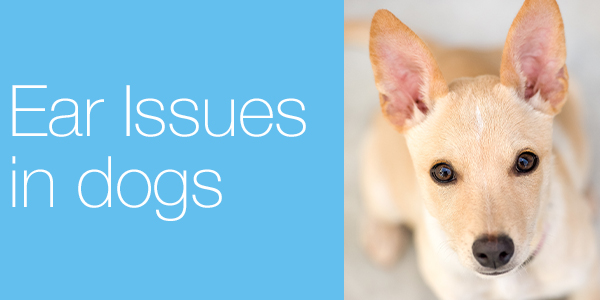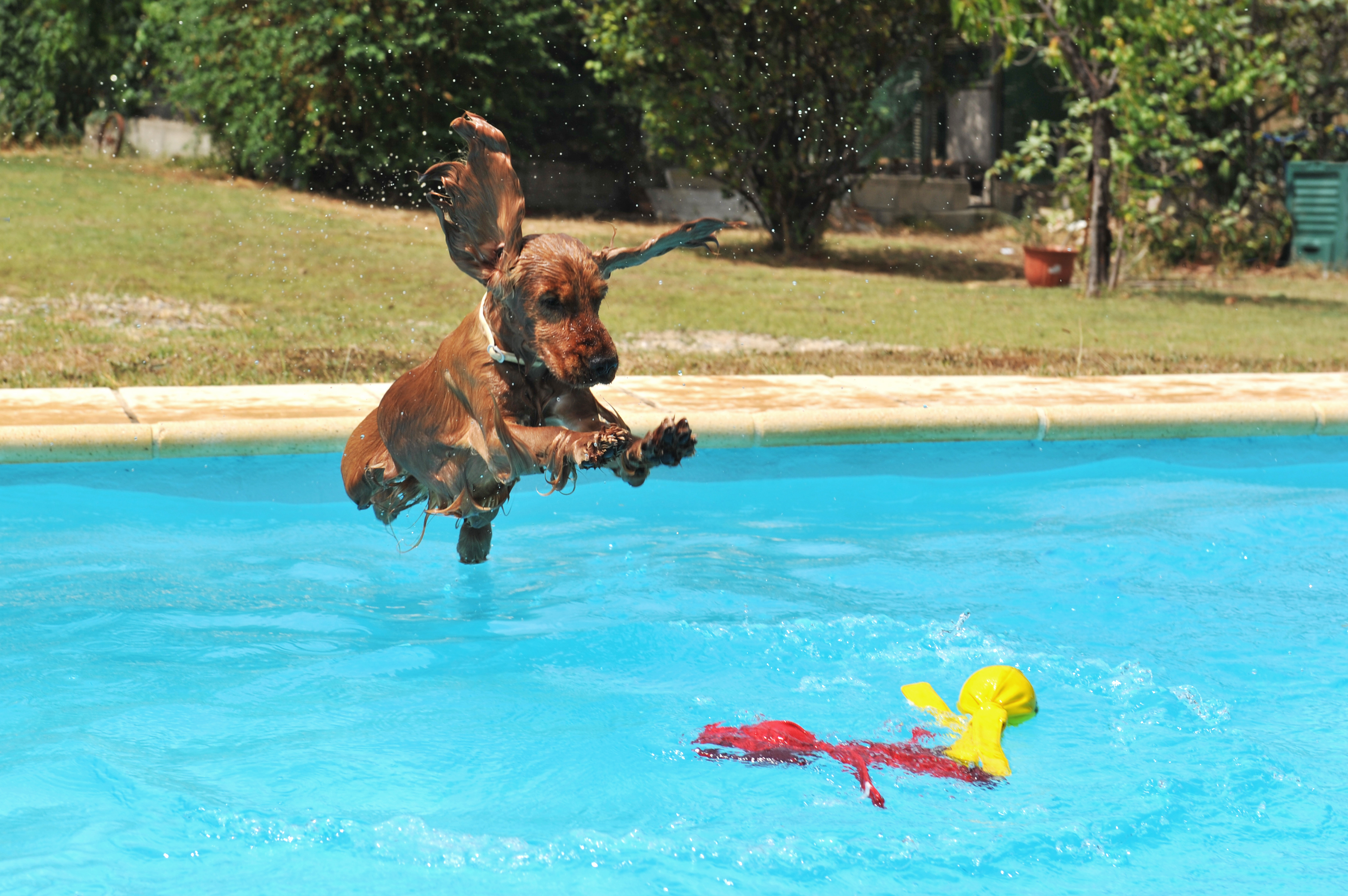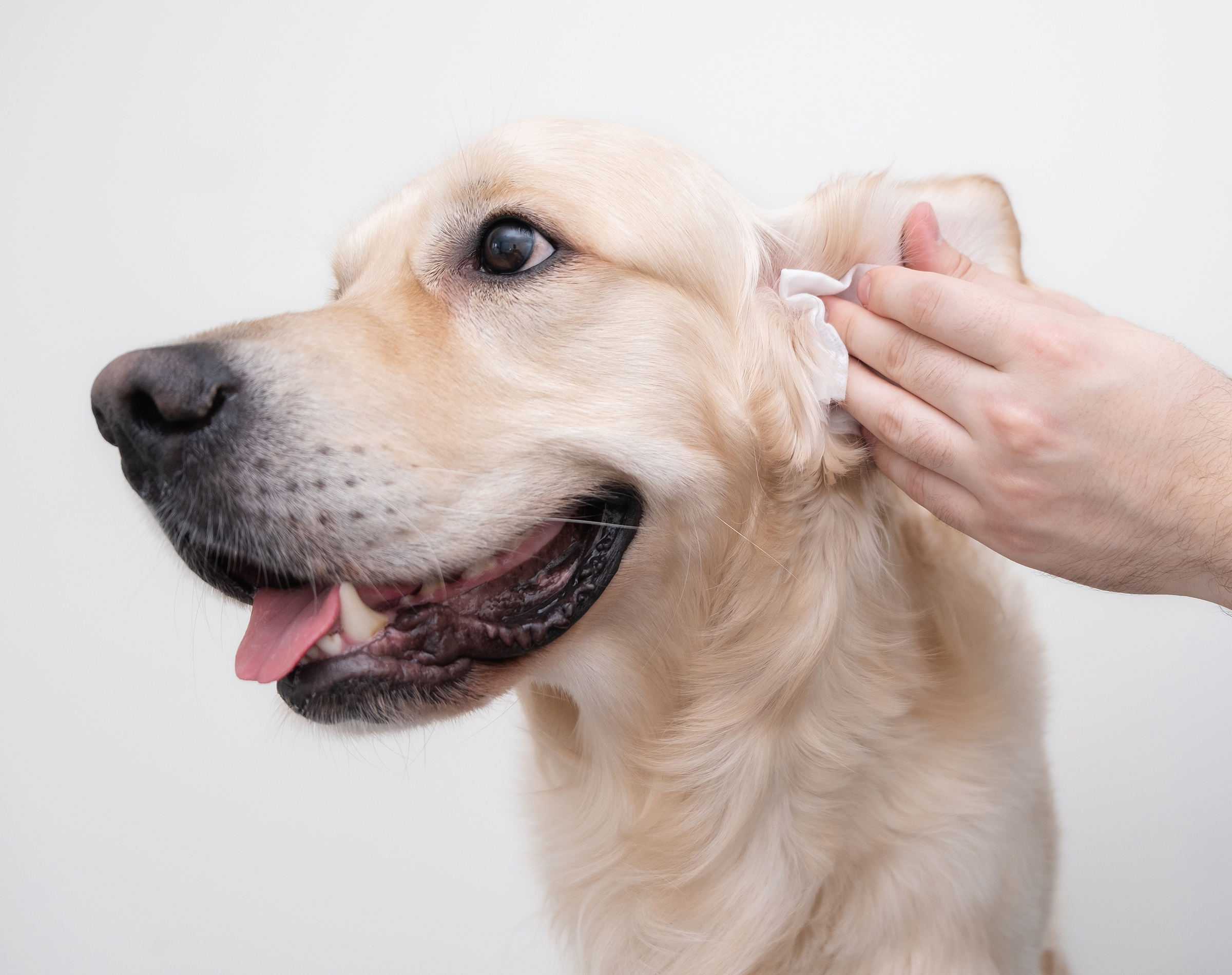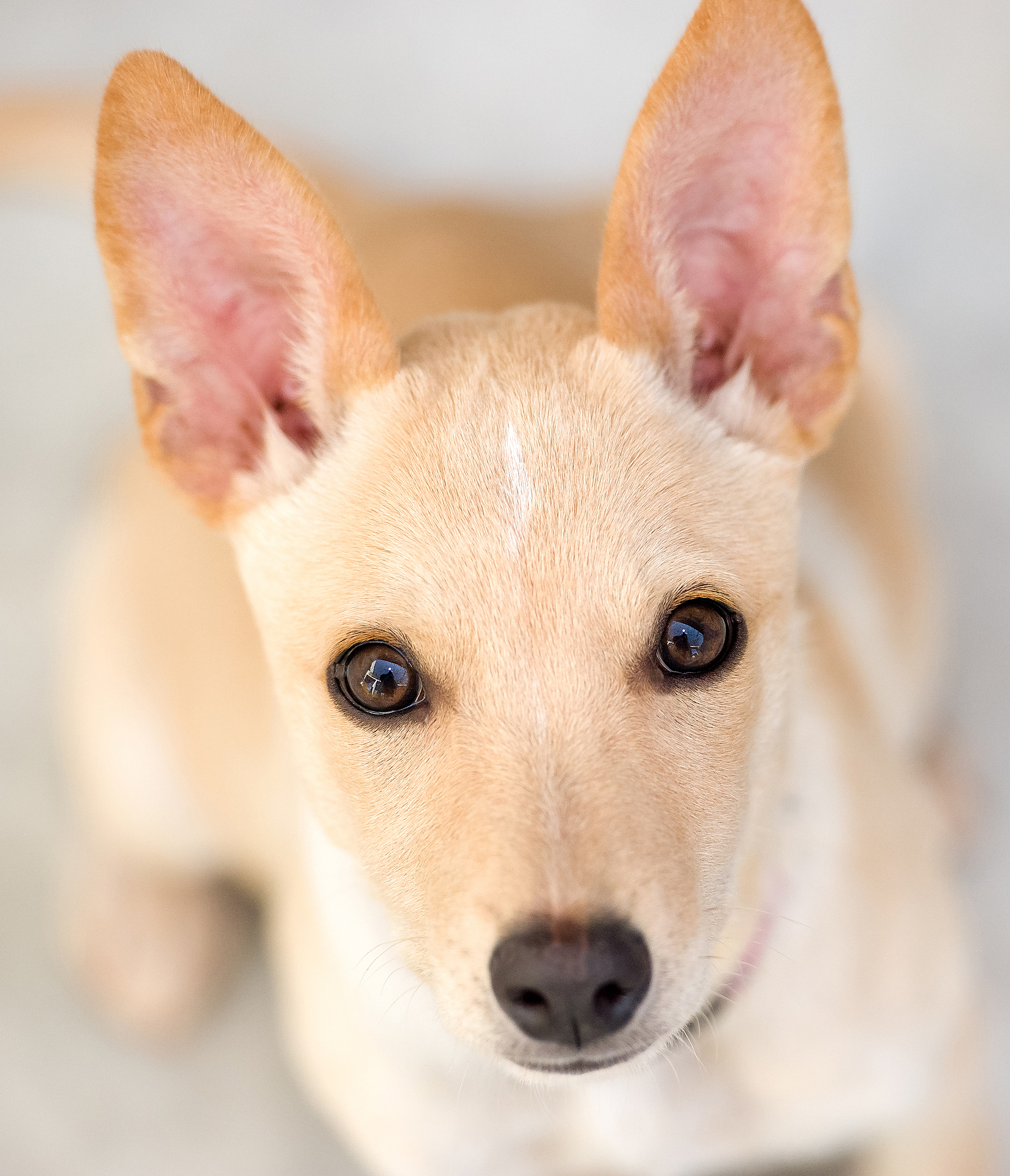




A recent study by the Royal Veterinary College found that ear infections were in the top 3 canine health problems in the UK, alongside dental disease and obesity. Ear issues can be very frustrating and expensive to treat as there are several underlying causes and perpetuating factors. Treating the infection in the short term, without addressing these other factors, inevitably only brings short term relief.
The most common condition of the ears is otitis externa. This is where the skin of the external ear canal becomes inflamed. The symptoms of otitis externa usually involve head shaking and scratching at the ears. You may notice that the ear becomes hot and red and it may produce a smelly discharge. One or both ears may be affected.
Direct causes
- Parasites, such as the ear mite Otodectes cynotis. Often owners assume their dog has ear mites when they see them scratching at their ears but it is actually relatively uncommon in adult animals. It is much more likely to be the problem in puppies and kittens.
- Foreign objects, such as a grass seed. Your vet may suspect your dog has a grass seed down their ear if there is a sudden onset of acute irritation with a corresponding history of walking through a grassy field at the right time of year.
- Allergies, such as atopic dermatitis. A large proportion of dogs presenting with otitis externa will have underlying allergies and hypersensitivities.
Perpetuating factors
- Inflammation of the ear, regardless of cause, will often result in an overgrowth of yeast and/or bacteria. This in itself is irritating and results in debris and discharge.
- Chronic inflammation results in narrowed ear canals, exacerbating and continuing the cycle.
- If the infection goes beyond the ear drum into the middle ear, then you might find your dog’s balance is affected and they may hold their head to one side.


Predisposing factors
- Heavy pendulous ears such as those on Spaniels and Basset Hounds.
- Small hairy ear canals affecting many Poodle and Poodle-cross breeds.
- Swimming.
- Tumors or polyps growing inside the ear canal.
Diagnosis
Your vet will have a look down your dog’s ears with an otoscope. If it is particularly painful, if the dog is uncooperative, or if your vet suspects a foreign body down the canal, then this otoscopic examination may need to be done under sedation or general anaesthesia. Your vet may take a swab of the discharge inside the canal. They can smear this on a slide to look down the microscope to see which bacteria or yeast are involved. They may also send this swab off to the lab to grow the bugs to find out which antibiotics they are sensitive to. The most common bacteria to find is the circular Staphylococcus pseudointermedius, but occasionally the vet may find the more troublesome rod-shaped Pseudomonas or other antibiotic-resistant species. The most common yeast to find is called Malassezia, resulting in that typical dark brown yeasty-smelling discharge.
Additional investigations may include tests for underlying allergies or imaging (X-Rays, CT) to check the deeper structures of the ear.

Treatment
Treatment can be frustrating if all causes, perpetuating and predisposing factors are not identified and addressed. Treatment will almost always involve a topical application; there are various different formulations but most include a combination of antibiotic, anti-fungal and steroid. However, lots of debris and discharge present in the ear canals can stop these treatments from working so your vet may suggest cleaning the ear canals beforehand, either regularly at home with an ear cleaner or under general anaesthetic. It can take weeks to months to resolve and will likely involve several recheck appointments with your vet.

Your dog may also be prescribed oral medication. This may consist of a pain killer or oral anti-inflammatory as the discomfort associated with ear conditions should not be under-estimated. Some dogs may need long term oral medication to control underlying allergic skin disease to prevent the otitis from flaring.


Prevention
It is important that you check your dog’s ears for redness, heat, discharge or smell regularly and take them to the vet if you suspect a problem. Do not use homemade remedies, such as diluted vinegar, as this can cause more irritation of the canal lining and make things worse. Use an ear cleaner specifically formulated for dogs as regularly as necessary. This may initially be daily but then might reduce to weekly for maintenance. If your dog has hairy ear canals, then plucking can help keep them clean, ventilated and allow ear treatments to work better. However, do not pluck ears that do not already have an issue as plucking itself causes irritation and may initiate a problem that wasn’t there in the first place.
Diets rich in anti-inflammatory omega 3 essential fatty acids and antioxidants can help keep the skin lining the ear canal comfortable and in optimal condition. Studies have shown supplemented diets resulted in less ear canal occlusion, redness, odour and discharge. Optimal skin nutrition is also paramount if the otitis externa is part of a wider allergic picture.
References
- Di Cerbo et al (2016) ‘Clinical evaluation of an anti-inflammatory and antioxidant diet effect in 30 dogs affected by chronic otitis externa: preliminary results’ Veterinary Research Communications 40: 29-38
- Royal Veterinary College (2021) https://www.rvc.ac.uk/vetcompass/news/get-brushing-dental-disease-tops-the-list-of-most-common-problems-in-uk-dogs-according-to-new-study-by-the-rvc
CONTACT
Copyright © Natural VetCare 2019
Security & Privacy | Cookies | Terms & Conditions





